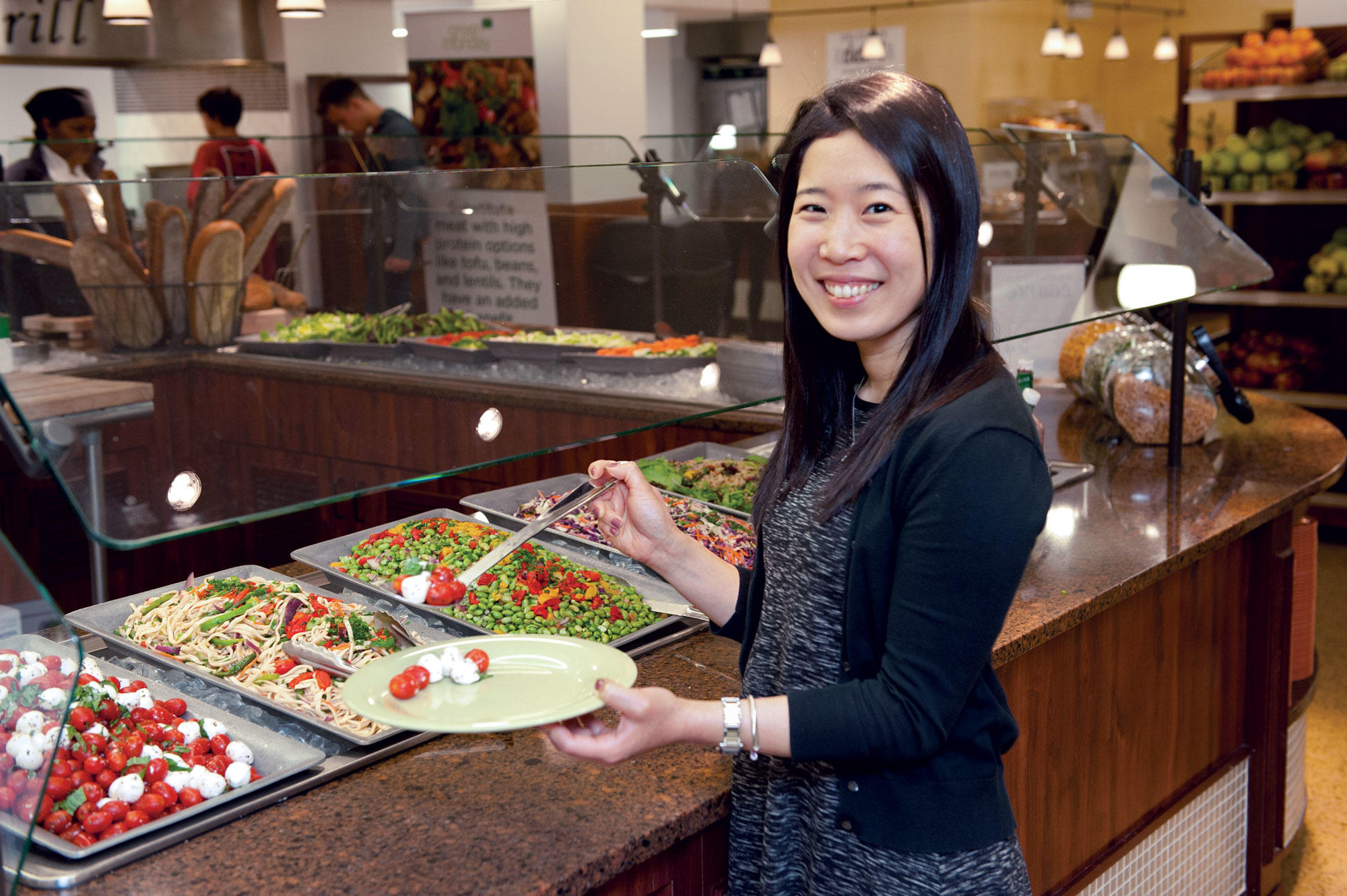Stepping into John Jay Dining Hall on a Thursday shortly before final exams, you get the feeling that not much has changed since the days of McKim, Mead & White. Light enters through leaded-glass windows, rich wood paneling covers nearly every surface, and students commune at long tables. These walls have absorbed thousands of debates and opinions, many about the food.
Complaining about dining-hall food is a collegiate tradition, and John Jay has been serving students since 1927, when an orchestra accompanied dinner and higher forces controlled student portions. A testy item published in the Spectator in 1937 invites dining-hall manager Alberta McFarlane to try eating “a full bowl of cold cereal in the John Jay Dining Hall embellished by the small amount of cream she gives as a maximum supply.” By the 1980s, the dining hall was all-you-can-eat, and the pendulum of student opinion gradually swung the other way: in 2005, a Spec editorial titled “Not So Nutritious” demanded the dining hall “provide a host of pamphlets, flyers and posters about nutrition [and] portions” and not just a few “token fruit stands.”
Ten years later, students have more than a pamphlet: they have Christina Lee, who was hired in January as Columbia’s first full-time dietitian. In the face of a growing number of students with food allergies (and others interested in healthy eating), Columbia brought Lee to Morningside Heights to guide on-campus eaters toward wellness, which Lee defines as “eating balanced meals, getting enough sleep, and making healthy lifestyle decisions.” This may explain the availability of strawberry-mint-infused water and chia seeds and flaxseed at the yogurt bar.
The hurried-looking student diners don’t seem to be complaining. When pressed, a young couple on their way out takes turns describing the food as “relatively healthy” and “diverse.” A visitor named Turner says John Jay is “consistent and above average” compared to other schools, and perhaps his own. That opinion has been confirmed by the food website The Daily Meal, which ranks Columbia dining third among American colleges.
Certainly the dining hall is getting healthier. Lee’s nutritional tour of John Jay begins at the Nut Zone, where peanut butter is isolated for the safety of allergic students. A sign reads “Sometimes you feel like a Nut! Sometimes you CAN’T.” Lee also keeps a clear labeling system for dietary preferences: V for vegetarian, VN for vegan, GF for gluten-free, even L for local.
As an undergraduate at NYU, Lee switched her major from economics to nutrition. Her interest in the subject was partly influenced by her mother, who emphasized healthy eating when Lee was growing up (“my mom only bought soda if we had guests”). Lee cooked for herself in college, went to bed early, and still managed to advise friends in a way that was caring and helpful rather than irritating. She is a dedicated omnivore and thinks about the USDA “MyPlate” guide each time she eats — basically, she says, “your plate should be half fruits and veggies,” with some room left for grains, protein, and dairy.
At John Jay, she points out the burgers and soda as well as the salad bar and baked fish, and makes assurances that it’s fine to eat any of those things in her presence. It seems wise to head for middle ground: the Chinese pork loin and a plate of three different salads.
“I’ve had a student come in and say, ‘I need more energy. What do I do?’” says Lee over lunch. “A couple of kids have come to me and asked, ‘Can I eat carbohydrates?’”
“Of course you can” is her answer to the latter question — “you need them.” For the student concerned about energy slumps, she advised carrying brain-food snacks, like nuts rich in omega3s. When students share concerns about the “freshman fifteen,” she suggests simply checking the dining website and deciding what to eat ahead of time. (The website, which Lee helps maintain, allows visitors to calculate the caloric costs on-screen: six ounces of Chinese pork loin equals 205 calories). Eat carbs, she says — just swap the refined grains for whole grains.
Meal plans are still required for the first year at Columbia, and Lee’s goal is to help make eating away from home feel more like home. “I want people to feel comfortable here,” she says. Lee emails weekly with a small group of students to plan their special diets. She accommodates those restrictions due to allergies, and also those directed by religious belief.
Her days begin before breakfast, when she checks menus, updates Twitter, and works on a blog called Christina’s Course; in the afternoon she counsels students individually; and, a few evenings a month, she meets more of the student body through events like the National Nutrition Month dinner in March, Chip and Dip Day, and a yogurt-parfait tasting.
“I don’t believe in depriving yourself. I don’t believe in dieting,” she says. “I believe in moderation.”
Perhaps those who challenged Miss McFarlane to scarf down her own cold, dry cereal would be pleased to see Christina Lee by the yogurt bar. The dietitian eats in John Jay twice a day.



